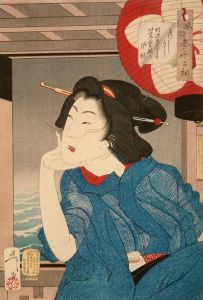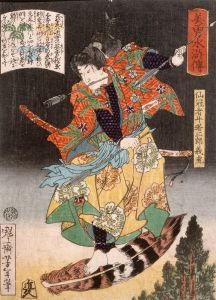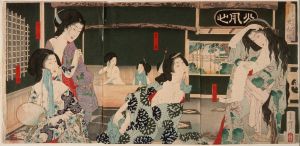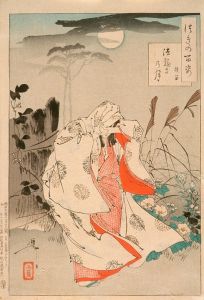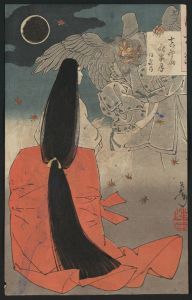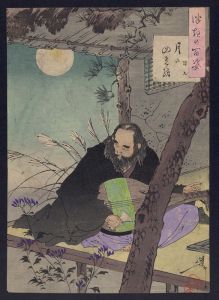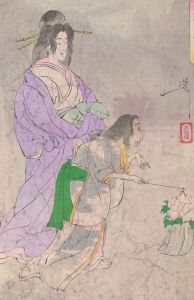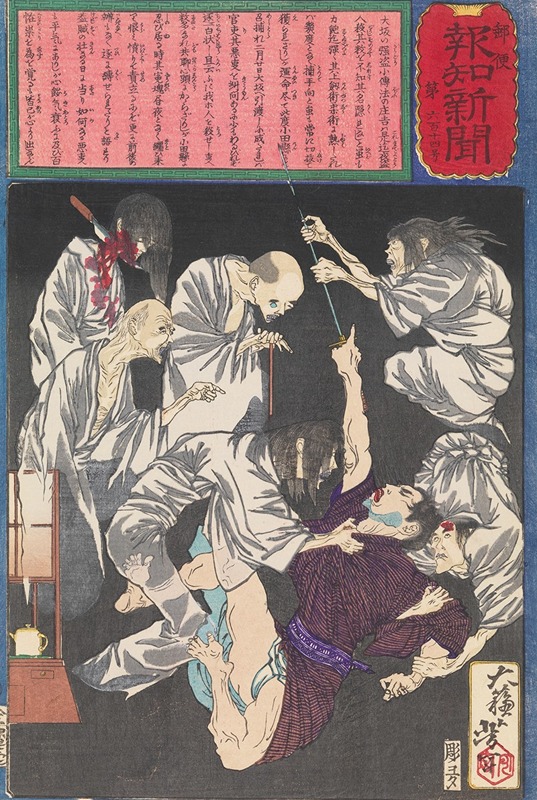
Kodembō no Shōshichi, an Osaka Thief, Tormented by Ghosts
A hand-painted replica of Tsukioka Yoshitoshi’s masterpiece Kodembō no Shōshichi, an Osaka Thief, Tormented by Ghosts, meticulously crafted by professional artists to capture the true essence of the original. Each piece is created with museum-quality canvas and rare mineral pigments, carefully painted by experienced artists with delicate brushstrokes and rich, layered colors to perfectly recreate the texture of the original artwork. Unlike machine-printed reproductions, this hand-painted version brings the painting to life, infused with the artist’s emotions and skill in every stroke. Whether for personal collection or home decoration, it instantly elevates the artistic atmosphere of any space.
Tsukioka Yoshitoshi (1839–1892) was a prominent Japanese artist known for his work in the ukiyo-e genre, which flourished during the Edo period and into the Meiji era. Yoshitoshi is often celebrated for his innovative approach to traditional woodblock printing, and his works frequently explore themes of beauty, horror, and the supernatural. One of his notable prints is "Kodembō no Shōshichi, an Osaka Thief, Tormented by Ghosts," which is part of his series "New Forms of Thirty-Six Ghosts" (Shinkei Sanjūrokkaisen), created between 1889 and 1892.
This particular print depicts the story of Kodembō no Shōshichi, a notorious thief from Osaka. The narrative behind the artwork is rooted in Japanese folklore and highlights Yoshitoshi's fascination with ghost stories and the supernatural. In the print, Shōshichi is shown being tormented by ghosts, a common theme in Japanese art that reflects the cultural belief in the spiritual world and its influence on the living.
Yoshitoshi's "New Forms of Thirty-Six Ghosts" series is significant for its departure from traditional ukiyo-e themes, incorporating more psychological and emotional depth. The series is considered one of Yoshitoshi's masterpieces, showcasing his mature style and his ability to blend realism with the fantastical. The prints in this series are characterized by their dramatic compositions, vivid colors, and intricate details, all of which are evident in the depiction of Kodembō no Shōshichi.
The print of Kodembō no Shōshichi is notable for its dynamic portrayal of the thief's fear and desperation as he is haunted by spectral figures. Yoshitoshi uses bold lines and contrasting colors to create a sense of movement and tension, capturing the viewer's attention and evoking a visceral response. The expressions of the ghosts and Shōshichi himself are rendered with a high degree of emotional intensity, a hallmark of Yoshitoshi's work.
Yoshitoshi's interest in ghost stories and the supernatural was not merely for entertainment; it also reflected the societal changes occurring in Japan during the Meiji Restoration. As Japan transitioned from a feudal society to a modern state, traditional beliefs and customs were increasingly challenged by Western influences. Yoshitoshi's work can be seen as a response to these changes, preserving and reinterpreting traditional Japanese themes for a contemporary audience.
The "New Forms of Thirty-Six Ghosts" series, including the print of Kodembō no Shōshichi, remains highly regarded in the art world for its artistic innovation and cultural significance. Yoshitoshi's ability to convey complex narratives and emotions through his prints has earned him a lasting legacy as one of the last great masters of ukiyo-e. His work continues to be studied and appreciated for its contribution to the development of Japanese art and its reflection of the cultural and historical context of his time.






